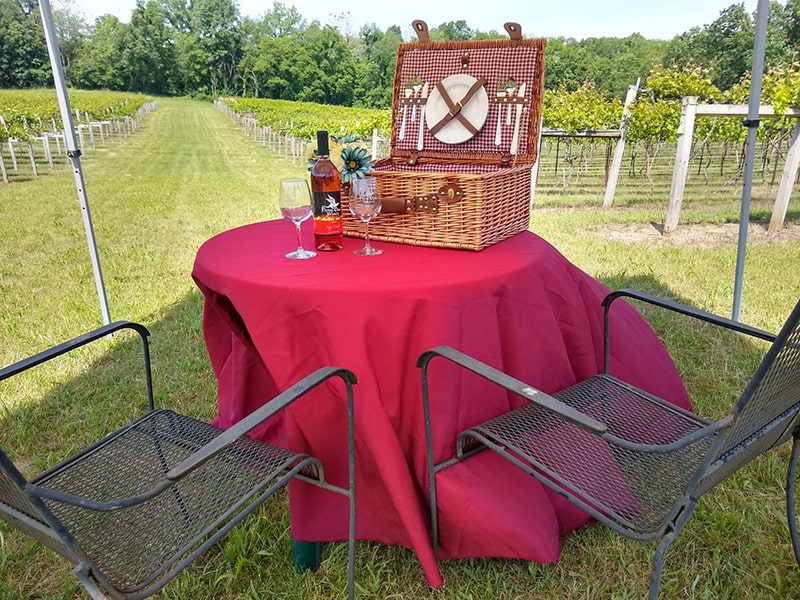
Essentials of Pairing Wine with Food: Insights from Bob
Here at Flying Otter Vineyard and Winery, we are passionate about pairing food and wine. Our mantra is, “Wine is sunshine in a bottle, meant to be enjoyed with family and friends, food, and music.” So, let's talk a little about enjoying wine with food.
The vast majority of wine drinkers in the US are new to wine, often preferring sweet, fruity wines—and that’s OK. I’ll admit that my own introduction to wine involved a boxed white zinfandel in the fridge, enjoyed with meals. It’s a style that’s more approachable than dry, acidic, or tannic wines. However, it is precisely these dry, acidic, and tannic wines that often pair best with food. I hope to see more people learn to appreciate this style. Just as many outgrow light beer and Kool-Aid, many wine drinkers gradually shift towards drier and more bitter-tasting (tannic) wines. Thus, many of those "new" wine drinkers who currently prefer sweet wines may develop a preference for drier styles in the future.
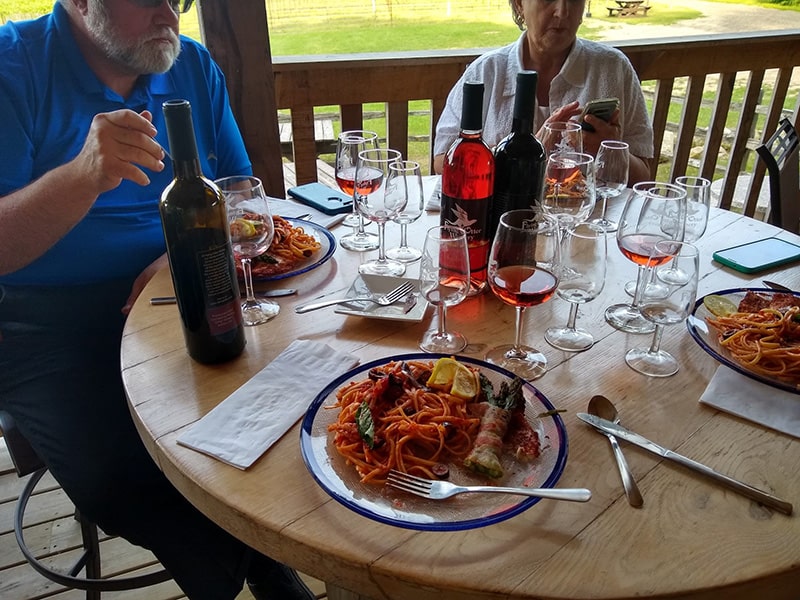
Most Americans don’t typically enjoy dinner with a glass of wine—although I do. Whether it's a delivery pizza or a meal prepared with love and effort, for most of us, mealtime is a chance to relax. It's often the one time of day when we can be alone with our thoughts or gather with friends and family. When we have a good dining experience, it tends to be memorable—even if it’s just pizza with friends. For many, wine is associated with fancy dinners or special occasions such as anniversaries, weddings, and holidays. Shouldn’t wine also be a part of everyday occasions?
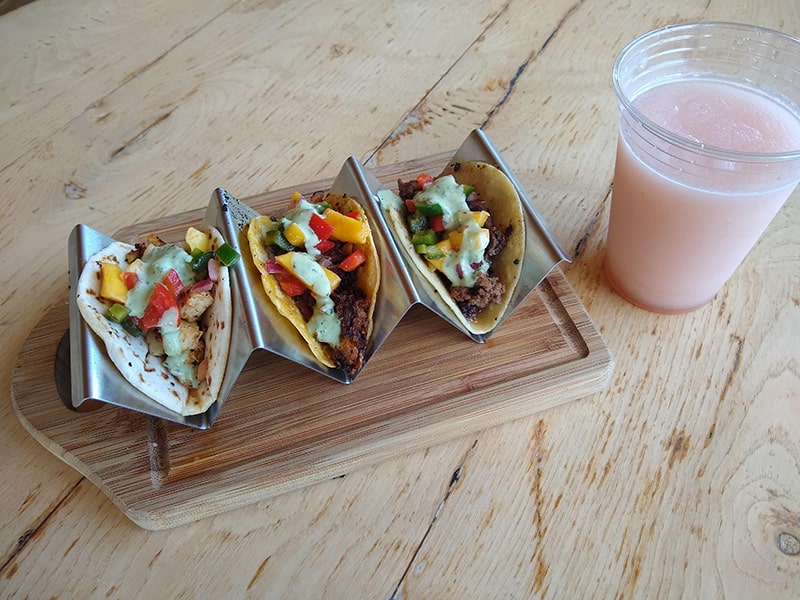
For many people, the idea of pairing food with wine is daunting. They believe they need special training or think they aren't sophisticated enough. In reality, most people have experienced good food and beverage pairings throughout their lives. It doesn’t take a sophisticated palate to enjoy the pleasure of warm cookies with a glass of cold milk, or the satisfaction of warm, salty pretzels with a cold beer. We all understand that something tart and acidic like lemonade tastes awful with cookies, or that something syrupy sweet doesn’t pair well with grilled steak. If we think of wine more as a condiment or seasoning, pairing wine with food becomes less intimidating. Imagine squeezing a lemon or pouring vinegar over fried fish. Now think of drinking a nice, dry, acidic white wine with that same piece of fish. See? It’s easy!
That’s not to say sweet wines don’t pair well with food. It can, however, be more challenging to find a wine with the right kind of sweetness to balance the meal. For example, when serving something savory like pork, applesauce or a baked apple is a traditional accompaniment—a food pairing. A wine with a similar level of sweetness, such as an off-dry St. Pepin or perhaps an off-dry apple wine, could be a good complement. However, if you pair it with something much sweeter, the balance is thrown off, with the wine competing instead of complementing the food. Slightly sweet wines can also help tame the heat in spicy foods, such as Thai or Indian dishes, but too much sweetness can overpower the food. When serving a sweet wine with dessert, however, you want the wine to be as sweet as or even sweeter than the dessert. For instance, dark chocolate paired with a very sweet raspberry dessert wine, or cheesecake drizzled with a cherry dessert wine.
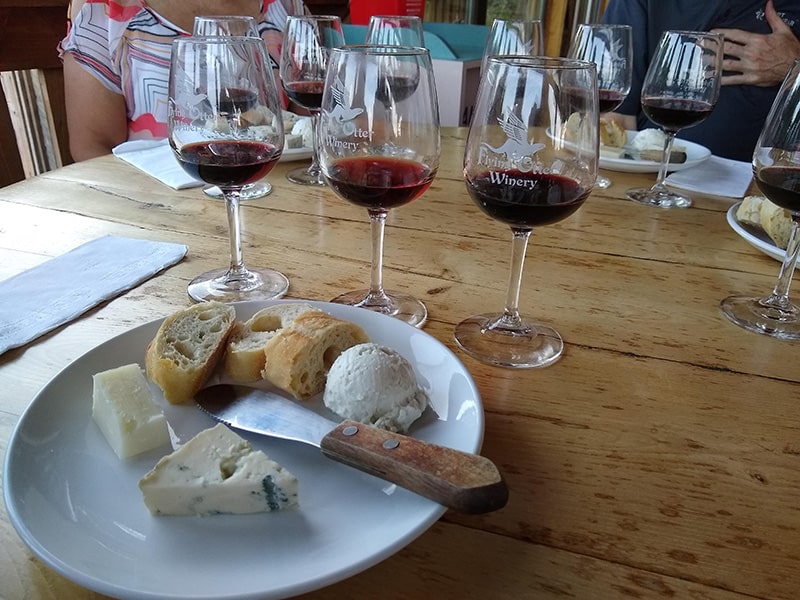
One of my favorite food and wine pairings is creamy Gorgonzola cheese with a nice dry red wine. Spread a little creamy Gorgonzola on a crisp, fresh baguette and try it with a French Côte du Rhône or a Michigan Marquette. They taste great together—better than each does separately.
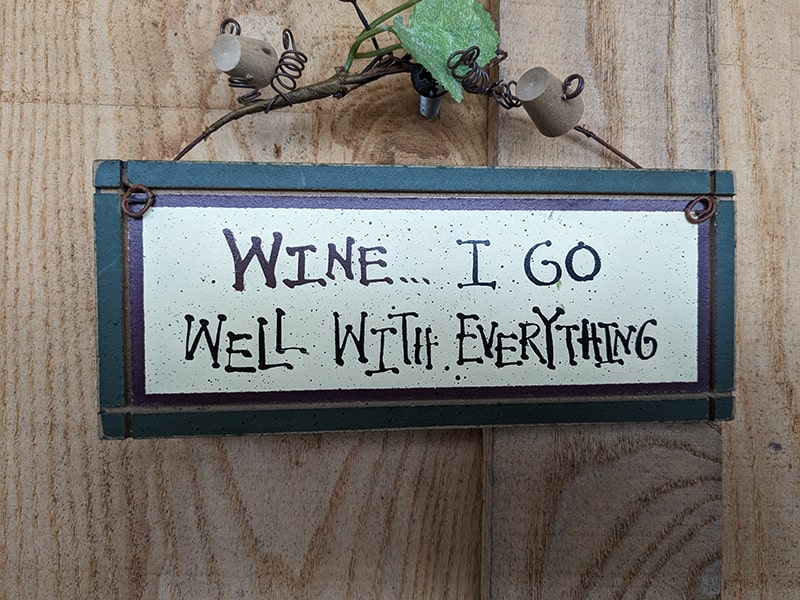
The best way to learn what works with a particular wine is to try different food and wine combinations—experiment! Remember, a great food and wine pairing makes the whole greater than the sum of its parts. For example, cheesecake tastes good, raspberry dessert wine tastes good, but together they taste great! Another point to consider: your mother may have taught you to swallow your food before taking a drink. However, this is not the optimum way to enjoy a wine and food pairing. Don’t be afraid to try a little of both at the same time. Let the food and wine mingle in your mouth. Are they better together than each alone? If so, you've discovered a great wine and food pairing.
